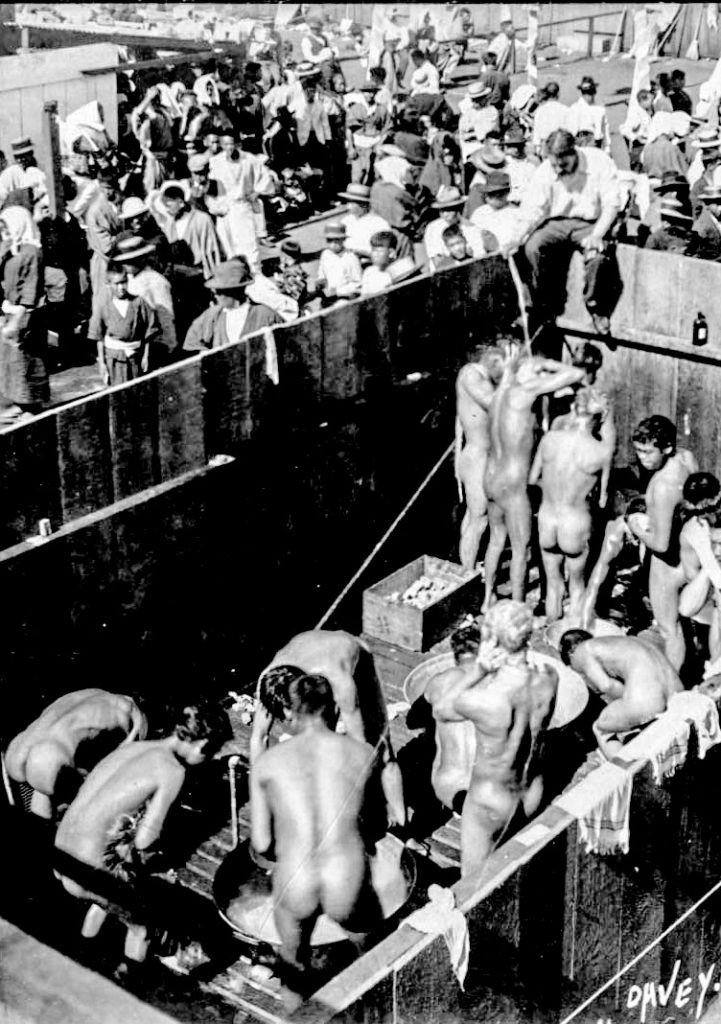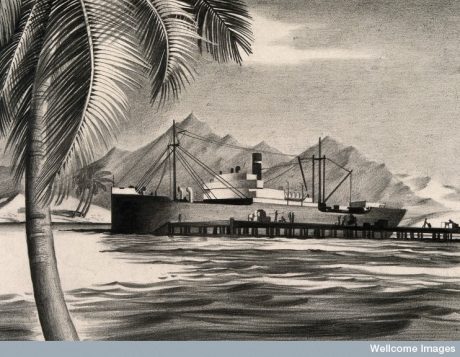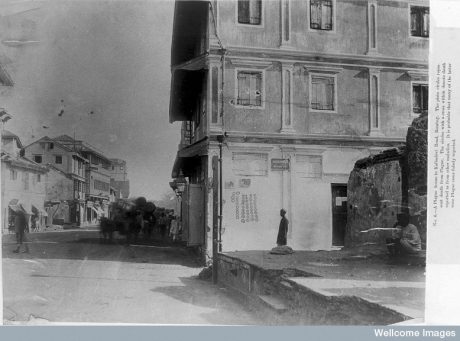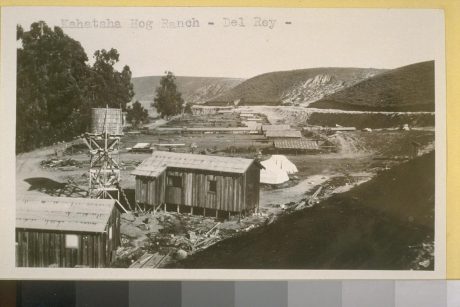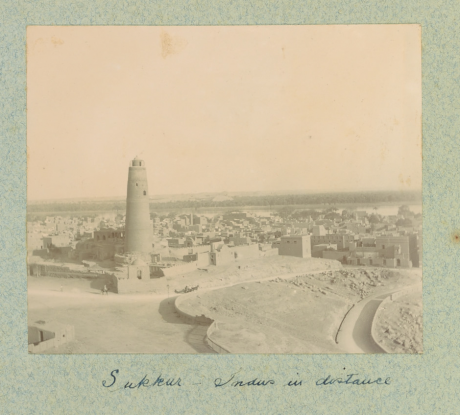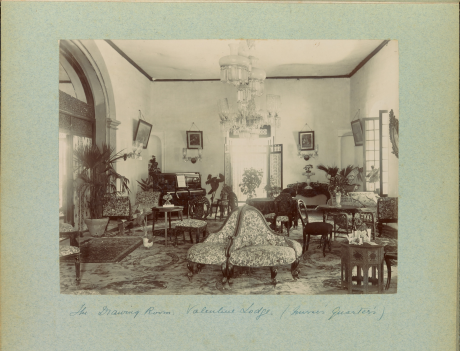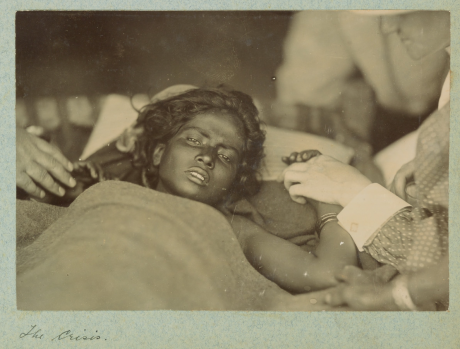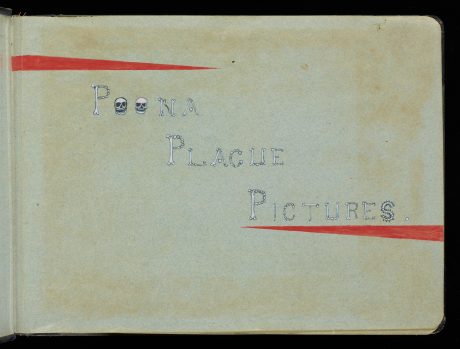The Third Plague Pandemic likely originated in Yunnan, China, in 1855. After arriving in Hong Kong in 1894 it spread from there across the globe. The epidemic was a testing ground for bacteriological medicine and public health, and galvanized the hygienic planning of colonial cities while also testing the rationalities and logics of colonial governance. Riots and resistance characterized some responses to colonial policies, while in other places there emerged complex political entanglements of colonial and subject agency. As members of the “Visual Representations of the Third Plague Pandemic” project, we are building a digital image archive of plague, including photography, scientific illustration, maps, and caricatures from all of the continents touched by plague between 1860 and 1950. This constitutes a new total visual archive of the first pandemic photographed on a global scale.
The visual collection that our project draws together constitutes a new intervention into the existing archival evidence of the pandemic as a global event. This new arrangement queries photography as a transparent historical source. When we encounter images, we enter them into a database that will eventually become an open access resource for historians of science, medicine, and visual culture. The database allows us to make lateral connections among San Francisco, Chinatown, rural South Africa, the docks of Glasgow, the chawls of Bombay, and the Sino-Russian border. Its agglomerative logic lets us slice across scales and unmake imperial territorializations that are historically taken for granted.
As a total object, or in fragments, our newly created visual archive of plague helps us to see in a different way, but it also raises questions about how to sift and sort these images: What kinds of lateral connections can be made? Which relations require detailed historical textual exposition and contextualization? How do the images collected deform and reframe the meta-category to which they refer? Which transversal, transnational connections are arbitrary, or artifacts of colonial framings, and which might be crucial? Here we reflect on the creation of a total collection of digital surrogates abstracted from colonial archives, and how this process of collecting, creating, and completing historical images disrupts our sense of a historical event. Using technology to re-encounter and curate the past leads us to query what our analysis does to our strange, discontinuous, always-unfinished, total archive of plague.
Photographs are often found lying oblique to the textual archives, boxed up out of the way or cataloged separately. The colonial archive–for example, in British India–was frequently constructed in an effort to comprehensively enumerate the population, yet photographs often have no place in the official archives of government. Instead, photographic collections–found as they are in the private scrapbooks of doctors, missionaries, and individuals at the edges of official power–can speak to the impossibilities of knowing everything. Take, for example, an album of the plague outbreak in the Indian city of Poona, a site of government panic and popular rebellion against interventionist plague measures. Juxtaposed in this single collection are holiday photos of ancient monuments (Figure 4), a quaint image of dining room (Figure 5), and gruesome portraits of dying plague patients (Figure 6), all of which are preceded by a macabre yet strangely humorous title page (Figure 7).
Photographs in their “archival context” frequently challenge the archive’s rigid frames of intention and its totalizing ambitions. Yet in much historical work on plague, these self-same photos are put to work in “illustrating” arguments with little regard for the technical, perceptual, and political work that photography can do. Take, for example, a photograph (Figure 8) of the plague outbreak in the Chinese quarters of Honolulu, Hawaii, in 1899: we know almost nothing about this scene, but it appears to depict the public washing of a group of naked men, a hygienic process. This photograph has a dramatic appeal that encapsulates a moment of obsessive sanitary policy undergirded by a racialized logic and a threat of violence, which traditional narratives have identified with the supposedly global experience of the Third Plague Pandemic. When it appeared on the front cover of a recent book about the global pandemic (Echenberg, 2007), the picture was therefore called upon to represent the entirety of the pandemic. It thus lost its position as an indexical datum in a vast collection of photographs preserved in the Hawaiian State Archive, a collection initially commissioned by the local Board of Health to document a local and rather minor outbreak of plague in Honolulu.
Yet within its own collection, it is nonetheless an unusual picture. The Hawaiian State Archive preserves 400 photos in this archival box, but the vast majority portray empty houses, streets, and places and produce a visual frame of plague void of any actions, events, or practices and instead concerned with mapping and understanding the epidemic’s ecology. Yet this particular photograph, when disconnected from its archival locality and the framings of a state’s history, and when freed of the specific sanitary regime under which it was created, has become a fixed representation of a pandemic that can cause complex and contradictory narratives to fold together into a simplified historical picture of plague. By bringing this single “iconic” photograph back into relation with its series and its many histories, we are reminded of the actual “fluidity, heterogeneity and even serendipity” of the archive, in which the making and preservation of photographs is never sufficiently turned into a unified practice (Edwards 2001:4).
To (re)place photographs in our archive is one way of reworking these particular pictures’ possibilities for relating to the picture of the whole. It allows them to form a new set of relations based upon logics of genre; as such, it allows them to rediscover their own contextual specificity as they begin to relate to other photos through relations of likeness, similitude, mimicry, and resemblance. Our project of total accumulation is bound to absurdity, but as a process, it creates relations that place demands of meaning upon the photo, rupturing its wholly illustrative status.
